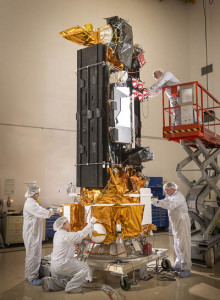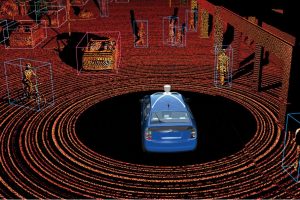
Toyota produces more than 10 million vehicles per year, making the Japanese corporation the largest automotive manufacturer in the world. For many years, Toyota has been expanding its engineering research and development efforts so it can transform itself from an automaker into a mobility company. In 2016, Toyota announced the launch of Toyota Connected, a technology company offering connected platform, Big Data, mobility services, and other automotive related services.
Toyota Connected has developed a Cloud-based digital connected mobility intelligence platform, which provides a variety of functions for mobility services. The platform includes Location-Based Services such as Map, Point of Interest (POI) search, Traffic Information and Route Guidance, which are generated from the Big Data collected from Toyota’s connected vehicles. Through partnerships with diverse companies, the platform is utilized for car-sharing services, car-rental services, telematics insurance, as well as autonomous transportation.
Toyota has collaborated with various ride-hailing and car-sharing companies globally, including Uber, Grab, DiDi and Getaround. In 2019, it also launched Toyota Share, a car-sharing service provided by Toyota dealers and Toyota rental and leasing branches; and ‘Chokunori’, a new unmanned rent-a-car service in Japan.
Using a Smart Key Box (SKB) device installed in vehicles, users can lock and unlock the door using an encryption key transferred to their smartphone app. The period during which the doors can be locked and unlocked is established and controlled by the car-sharing center in accordance with the user’s reservation details. The entire car-sharing and rental process, including member registration, unlock and lock vehicles, return vehicles, and fee payment, can be performed via the smartphone app.
All vehicles are equipped with a telematics device to provide services such as:

In 2018, Toyota partnered with JapanTaxi to develop a taxi dispatch support system that predicts the demand for taxi services, combining data from taxi service logs with predictions of demographics made by location-based mobility data as well as event information.
The companies collect taxi service log data and demographic predictions, as well as other factors that affect taxi demand, such as, weather, public transport service disruption, and events at large venues. The data is fed into Machine Learning models through an AI-based system to predict the size of demand.
Using tablet PCs equipped with the AI-based system, taxi drivers can view the latest number of unoccupied taxis around an area shown in a map. Accordingly, drivers can position their taxis based on the supply-demand balance. As a result, more taxis can serve areas with higher demand and insufficient supply to reduce waiting time for passengers. In addition, drivers can receive supporting information on the tablet that shows the routes where they are likely to find passengers, based on insights from other drivers.
Toyota debuted e-Palette, a battery-electric autonomous vehicle, at the 2019 Tokyo Motor Show. The e-Palette was meant to provide a loop-line bus transportation service for athletes and related staff in the Olympic and Paralympic villages at the Olympic and Paralympic Games Tokyo 2020, which were unfortunately postponed to July 2021.

Using its mobility services platform as the foundation, Toyota has developed the Autonomous Mobility Management System (AMMS) to manage the operations of e-Palette vehicles. The system is connected to the e-Palette Task Assignment Platform (e-TAP), which ensures the e-Palette vehicles are dispatched when needed, where needed, and in the amount needed. The goal is to reduce customer waiting times and alleviate congestion.
The system allows operation schedules to be changed flexibly, with vehicles automatically dispatched and returned, according to real-time mobility needs. When additional vehicles are introduced into a service, the intervals between vehicles are adjusted to ensure even spacing of services. Vehicle abnormalities are also automatically detected and in case of a problem the vehicles are automatically returned to the depot; replacement vehicles are immediately dispatched on the route to ensure stability of operation. In an emergency, the vehicles can be stopped and returned to service remotely, with an extra level of safety management to provide passengers with peace of mind.


Saurabh Gupta, Syed Taha Owais
Kindly refer to your July-August’99 issue of GIS@development. Personally, I am in full agreement with the conclusions and recommendations presented by S.M.Mathur [Restrictions on Survey of India Maps], M.N. Kulkarni
© Geospatial Media and Communications. All Rights Reserved.